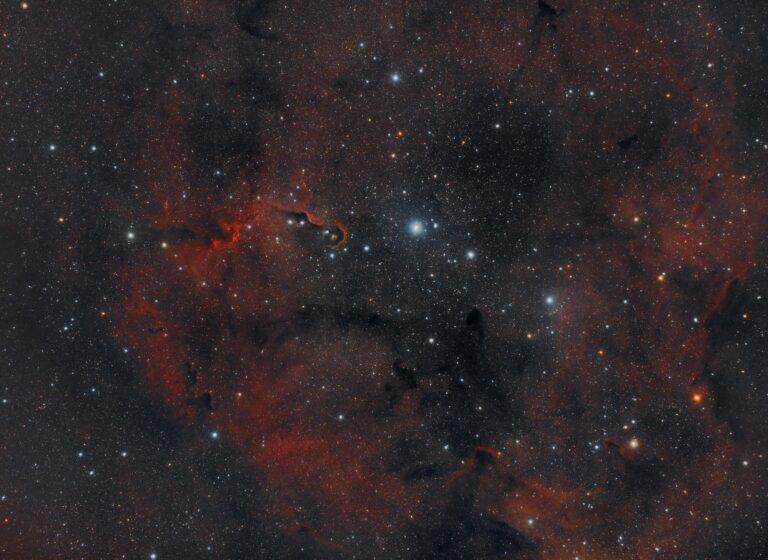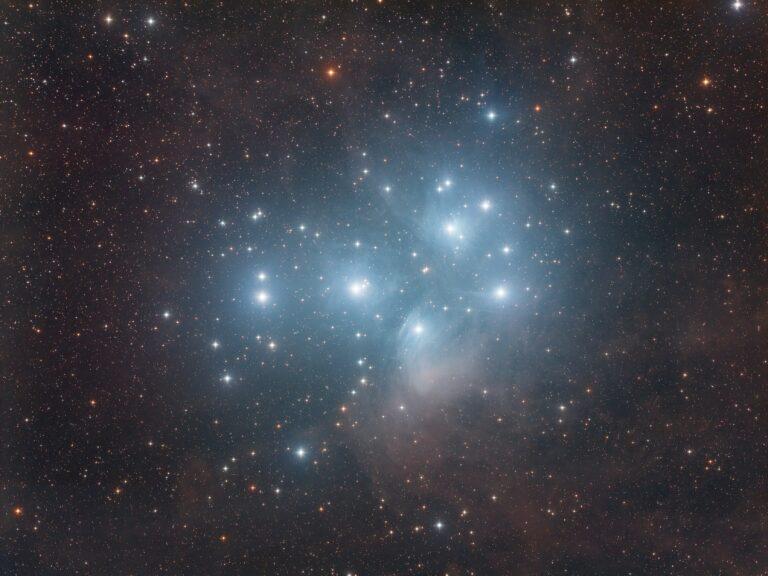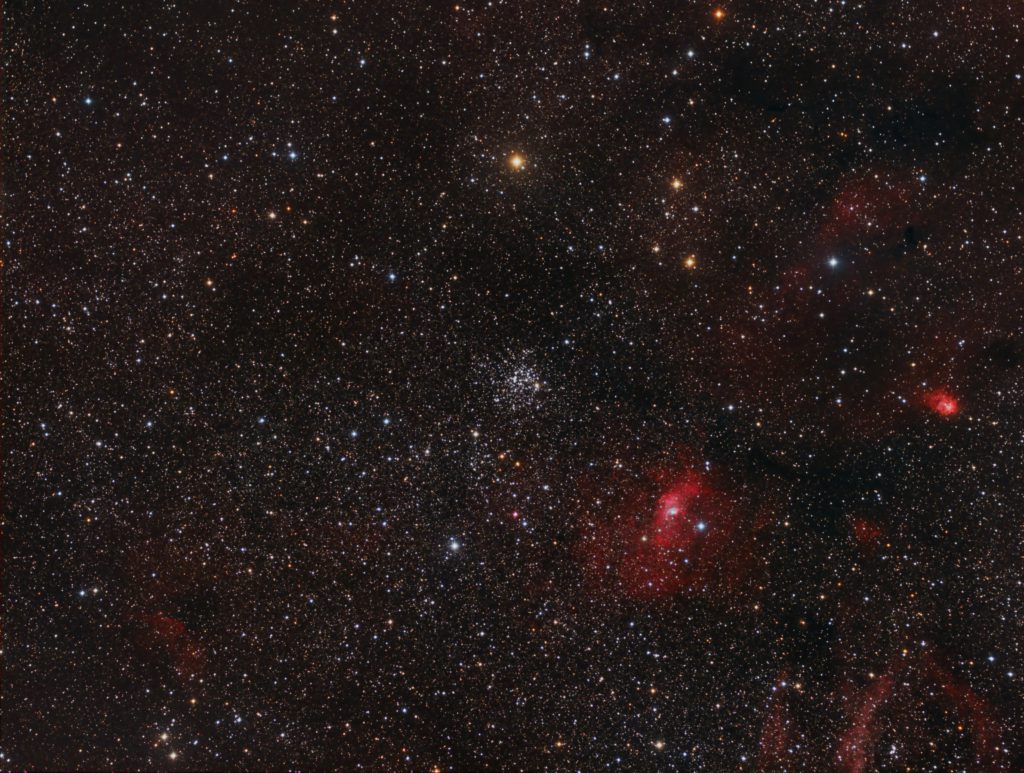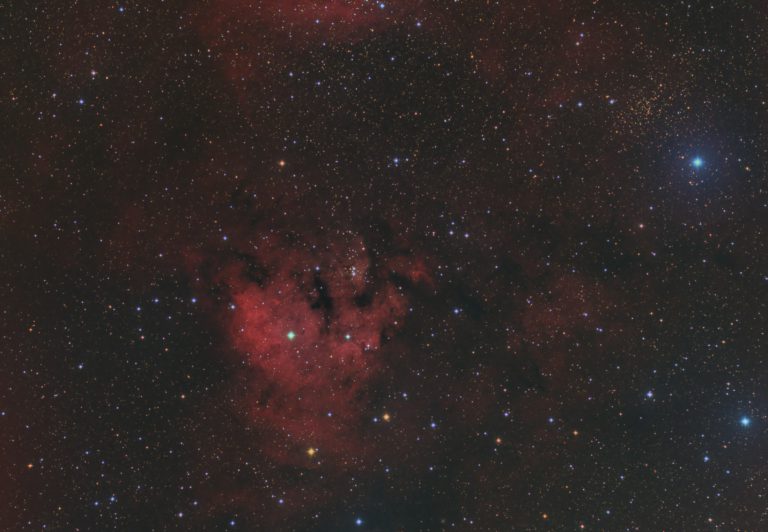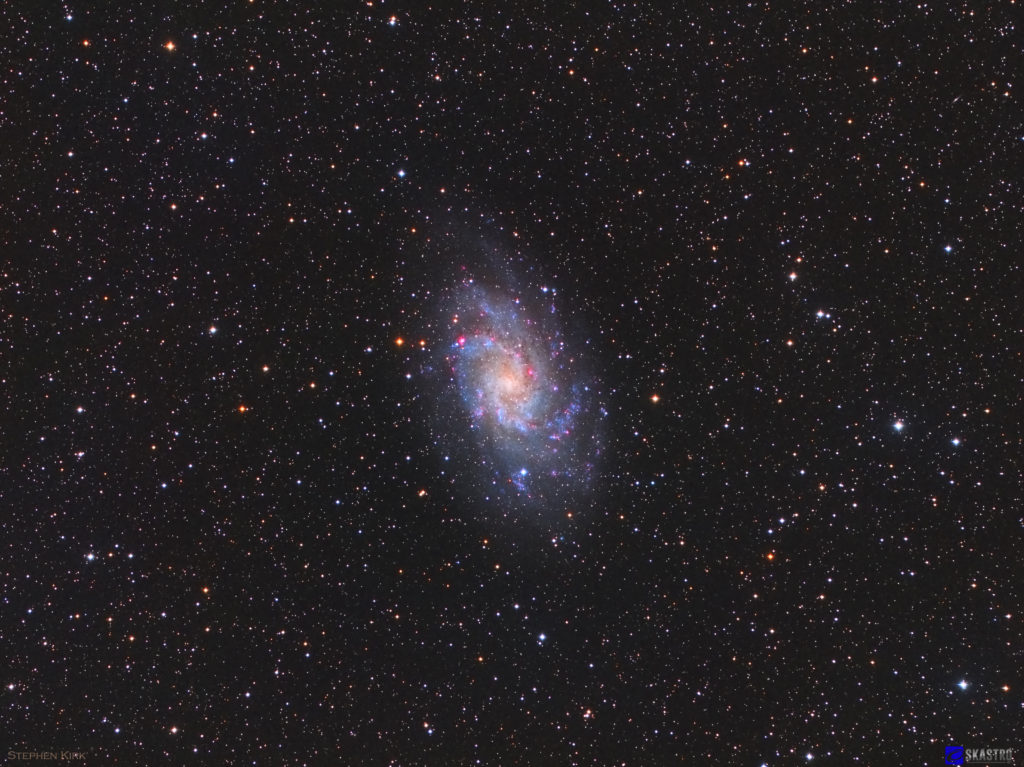IC1396 is a fabulous and well known nebula complex in the Far Northern constellation of Cepheus and is about 2400 light years distant. It is comprised of a huge cloud of excited hydrogen gas known as a HII region (pronounced H-two). Some nice features include the Elephant’s Trunk nebula embedded in it.Full resolution (8Meg) image here (opens in a new tab): https://skastro.net/wp-content/uploads/2024/01/IC_1396_WF.jpg IC1396 Nebula in Cepheus Technical Details Imaged from my back yard in Nottingham, UK on the nights of 15 and 16th October 2023 when almost directly overhead. It consist of 54 x 240s exposures with a QHYCCD One Shot Colour (OSC) camera with a gain of 30 and offset of 0 through a Takahashi FSQ85 telescope with the 0.67 focal reducer/flattener.Sky conditions and transparency were both poor, as usual for the UK in all but the rarest nights of seeing.I hope you like it 🙂 IC1396 Annotated Finder Chart…
The magnificent Pleiades, known to many as the Seven Sisters, is an open cluster in the constellation of Taurus. The Pleiades have been known since the dawn of antiquity and even some cave paintings from 30000 years ago depict them on cave walls. The cluster is 442 light years away and they are about 20 light years across. The exact distance has been a source of debate amongst astronomers for many years but the matter was recently settled using parallax data from the Gaia satellite. Technical Data Imaged with Takahashi FSQ85 refractor and G2-8300 CCD camera with Astrodon E-series RGB filters. It consists of 20 x 300 second exposures in each of those filters to give over 90 minutes in each of the three channels for a combined integration of about four and a half hours. As is normal with any type of cluster, I did not bother with a…
M52 is a fabulous open star cluster in Cassiopeia. It is set against a huge amount of nebulosity that spans across the constellations of Cassiopeia and Cepheus. In this image The Bubble Nebula can be seen at the four o’clock position with respect to M52 and many other objects in the Sharpless Catalogue of nebulae are also visible. These are detailed in the annotated version of the image below. The square red box on the finder chart on the right represents the image.Full resolution image here (opens in a new tab). Technical Information Imaged from my backyard in Nottingham, UK on 28 November 2021 with a FSQ85 refractor and a Moravian G2-8300 cooled CCD camera with Astrodon HaRGB filters on my MESU200 mount guided with OAG.All image data is binned 1×1: Note I do not capture a separate luminance when I bin all of the data channels is 1×1 in…
Sh2-171 in Cepheus Sh2-171 is a star forming region in the constellation of Cepheus in the far northern hemisphere of the sky. Imaged here with Takahashi FSQ85 and G2-8300 with Astrodon HaRGB filters.
M33 is a galaxy about 2.8 – 3 million light years away in the constellation of Triangulum. Along with M33, it is one of the Local Group of galaxies with which our own Milky Way galaxy shares the local universe. M33 is the most distant object that the human naked eye can see, appearing as a ghostly white smudge on a very dark night from clear skies. It is a magnificent spiral galaxy about half the size of our own galaxy and because of its close proximity to us it appears very large in our skies and is am oft-photographed object by many, myself included. M33 Galaxy in Triangulum I’ve imaged M33 multiple times. For example, with the same FSQ85 telescope here and also at a closer image scale with the TEC140 refractor here. This time I have set the galaxy in a slightly wider field by utilising the FSQ85 0.73…

